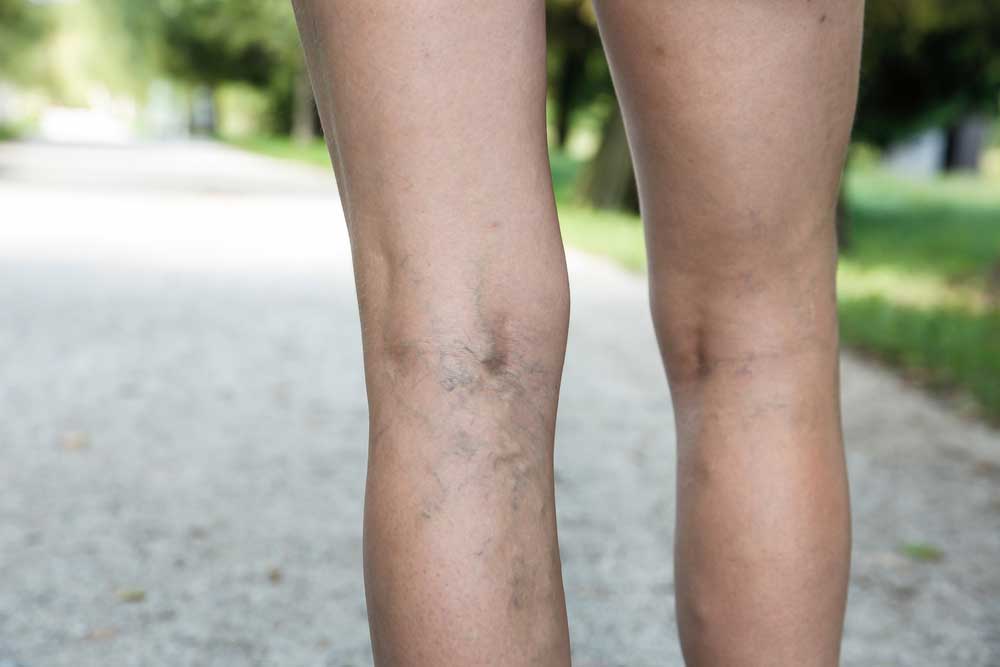Understanding the Different Types of Leg Veins and Their Treatments

When it comes to leg veins and their related issues, understanding the different types can be a key part of determining the right treatment plan. In my practice, I often address concerns regarding various leg veins, each type presenting its own set of challenges and treatment possibilities. Here's a detailed guide to the different types of leg veins, ranging from superficial to deep, and how they can be managed effectively.
Different Types of Leg Veins
Before we examine the 6 different types of leg veins, it's helpful to have a basic understanding of the structure and function of leg veins. These vessels are primarily responsible for returning blood back to the heart after it delivers oxygen and nutrients to the tissue. Because the oxygen level in this blood is low, it turns blue as opposed to blood with a high level of oxygen in the arteries, which is red.
Challenges in this circulatory process can lead to various venous issues. The leg veins can be categorized into three main types: superficial veins, which are present in and just beneath the skin; deep veins, located deep within the muscles; and perforator veins, which connect the superficial veins to the deep veins. Each category plays a specific role in the circulatory system, and understanding these roles is essential for identifying and treating venous problems.
1. Superficial Veins
Superficial veins are the ones most commonly treated in vein care. They include several subtypes:
Spider Veins:
These are the tiny, feathery veins visible on the surface of the skin. Despite their delicate appearance, they can cause symptoms like burning and tingling. Treatment typically involves sclerotherapy or laser therapy, which are highly effective in reducing their visibility and associated discomfort.
Reticular Veins:
Often appearing as blue veins, reticular veins serve as the feeders to spider veins. When abnormal, they create a wavy pattern across the leg. These veins can also cause burning, stinging, and tingling in the affected areas. Similar to spider veins, these can be treated with sclerotherapy, providing relief of symptoms and a return to a normal looking leg.
Varicose Veins:
These are the large, bulging veins that are easily visible on the surface of the skin. Caused by venous pressure, they can be quite painful and uncomfortable. Treatments such as sclerotherapy and microphlebectomy are effective in reducing both their appearance and the discomfort they cause.
2. Truncal or Axial Veins
The great saphenous vein is the primary vein in this category. Located under the skin, it is usually not visible without an ultrsound. It is a major contributor to leg vein issues due to its size and its tendency to develop abnormal vein valves. Treatment generally involves endovenous ablation, which is highly successful in alleviating symptoms and improving leg health.
3. Perforator Veins
Perforator veins serve as connections between the superficial and deep venous systems, allowing blood to pass through muscle layers via small openings. When these veins malfunction, blood in the leg can build up and cause high pressure, leading to discomfort and visible vein issues in the lower calf and ankle. Ablation or injection treatments are very effective in managing these veins, improving both appearance and symptoms.
4. Deep Veins
The treatment of deep veins is more complex and less commonly undertaken. Deep veins, if affected by conditions like deep vein thrombosis (DVT), might require urgent medical interventions such as clot dissolution. However, chronic issues like post-thrombotic syndrome where a scar forms in the vein might be managed with stents or balloons, though outcomes are less predictable and treatment needs to be approached with caution.
Why It's Important Not to Delay Vein Treatment
Opting to wait on treatment and relying on temporary solutions like compression stockings might seem feasible initially. However, vein conditions are progressive. Over time, symptoms such as painful, swollen, and achy legs can worsen, significantly impacting your evening activities and enjoyment of life. This progression can lead to fatigue, sleeplessness, and even weight gain as your activity decreases due to vein-related fatigue.
As these conditions worsen, treatment becomes not just a recommendation, but a necessity. Early intervention can prevent the severity of these symptoms and maintain a higher quality of life. Waiting too long can lead to more invasive treatments and prolonged recovery times. Hence, understanding when to seek treatment is crucial in managing vein health effectively.
Each type of vein in our legs plays a different role in our vascular health and requires specific approaches when issues arise. From cosmetic concerns with spider and reticular veins to more serious conditions involving varicose, trunk, and perforator veins, the advancements in medical treatments have made dealing with these issues more effective than ever. Treatments really will help your vein symptoms and improve the appearance of your legs. Consulting with a vein specialist can provide you with the best options tailored to your specific needs.


